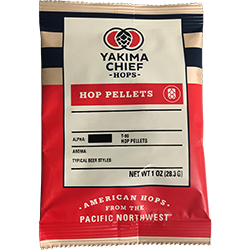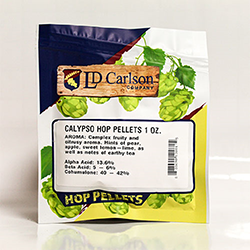How Are Hop Pellets Made?
Posted by Matteo Lahm on 21st Oct 2023
From Field to Froth: Unraveling the Journey of Hops to Hop Pellets
Let’s talk about hop pellets, those little nuggets that give your beer its signature bitterness and aroma and start with a history lesson. Hop pellets, believe it or not, are a relatively new kid on the block. They were introduced in the 1970s, a time when bell-bottoms were in vogue and disco was the rage. But unlike those questionable fashion choices, hop pellets have stood the test of time.
So, how are these tiny powerhouses made? The process begins with the harvesting of fresh hops. This is a delicate operation, usually done by hand to ensure the hops are picked at their peak. Picture a field of green, the air filled with the intoxicating aroma of hops, as skilled workers carefully pluck the ripe cones from the bines.
Once harvested, the hops are then dried. This is a crucial step, as it reduces the moisture content from about 80% to around 10%. Imagine a giant food dehydrator, but instead of fruit, it's filled with hops. The drying process helps to preserve the hops and intensify their flavor.
Next, the dried hops are ground into a fine powder. This isn't your average kitchen grinder we're talking about. It's a specialized mill that ensures the hops are ground to the perfect consistency. The result is a powder that's rich in alpha acids and essential oils - the key ingredients that give your beer its unique flavor and aroma.
The final step is the pelletization. The hop powder is fed into a pellet mill, where it's compressed under high pressure into the familiar cylindrical shape. Picture a Play-Doh fun factory, but instead of colorful dough, it's hop powder being extruded. The pellets are then cooled and packaged, ready to be shipped to breweries and homebrewers like you.
Now, let's talk about the pros and cons. Fresh hops, they're like that high school sweetheart - first love, unforgettable, but a bit high maintenance. They need to be used quickly after harvest, and they take up a lot of space. On the other hand, hop pellets are like the reliable partner you can always count on. They're easy to store, have a longer shelf life, and provide a more consistent flavor.
Like everything in life, hop pellets aren't without their quirks. One of the main gripes some brewers have is that they can sometimes impart a grassy flavor to your beer. This typically happens when they're not used correctly. Over-boiling or using an excessive amount can lead to this unwanted flavor. It's like adding too much salt to your soup.
Another potential downside is that hop pellets lack the romantic appeal of fresh hops. Fresh hops have a certain allure to them. They're vibrant, aromatic, and visually appealing. There's something about tossing those fresh, green cones into your brew that just feels right. It's a sensory experience - the feel of the hops in your hands, the smell wafting up from the brew kettle.
Hop pellets, on the other hand, are a bit more utilitarian. They're compact, uniform, and, let's face it, not as pretty to look at. They don't offer the same tactile experience as fresh hops. But remember, brewing isn't just about the aesthetics. It's about creating a delicious beer that you can be proud of, which leads to another big advantage. Because they are easy to store and available in small quantities, you can get very creative in combining different types of hop pellets for evermore complex and nuanced flavors. To do this with fresh hops, you’d need a very fast airplane and a lot of free time.
So, while hop pellets might not have the same romantic appeal as fresh hops, they more than make up for it with their convenience and consistency. And let's face it, they don't have the same romantic appeal as fresh hops. But hey, we're here for the beer, not the romance, right?
Storing hop pellets is a breeze. Keep them in a cool, dark place, preferably in an airtight container. Your refrigerator is a perfect spot. As for their shelf life, hop pellets can last up to two years if stored properly. That's a lot of brews, my friend!
Now, let's get down to the nitty-gritty. How do you use these little green gems? It's simple. You add them to your brew during the boiling process. The heat releases the alpha acids, which give your beer its bitterness, and the essential oils, which provide the aroma.
So, there you have it, brewmaster. A crash course in hop pellets. They may not have the glamour of fresh hops, but they're reliable, easy to use, and they've got a long shelf life. And let's face it, in the end, it's all about the beer. So, go ahead, give hop pellets a shot. Your taste buds, and your beer-loving friends, will thank you.
Remember, brewing is an art, and you're the artist. So, experiment, explore, and most importantly, enjoy the process. After all, it's not just about the destination (though a delicious pint of beer is a pretty great one), it's about the journey. Happy brewing!



